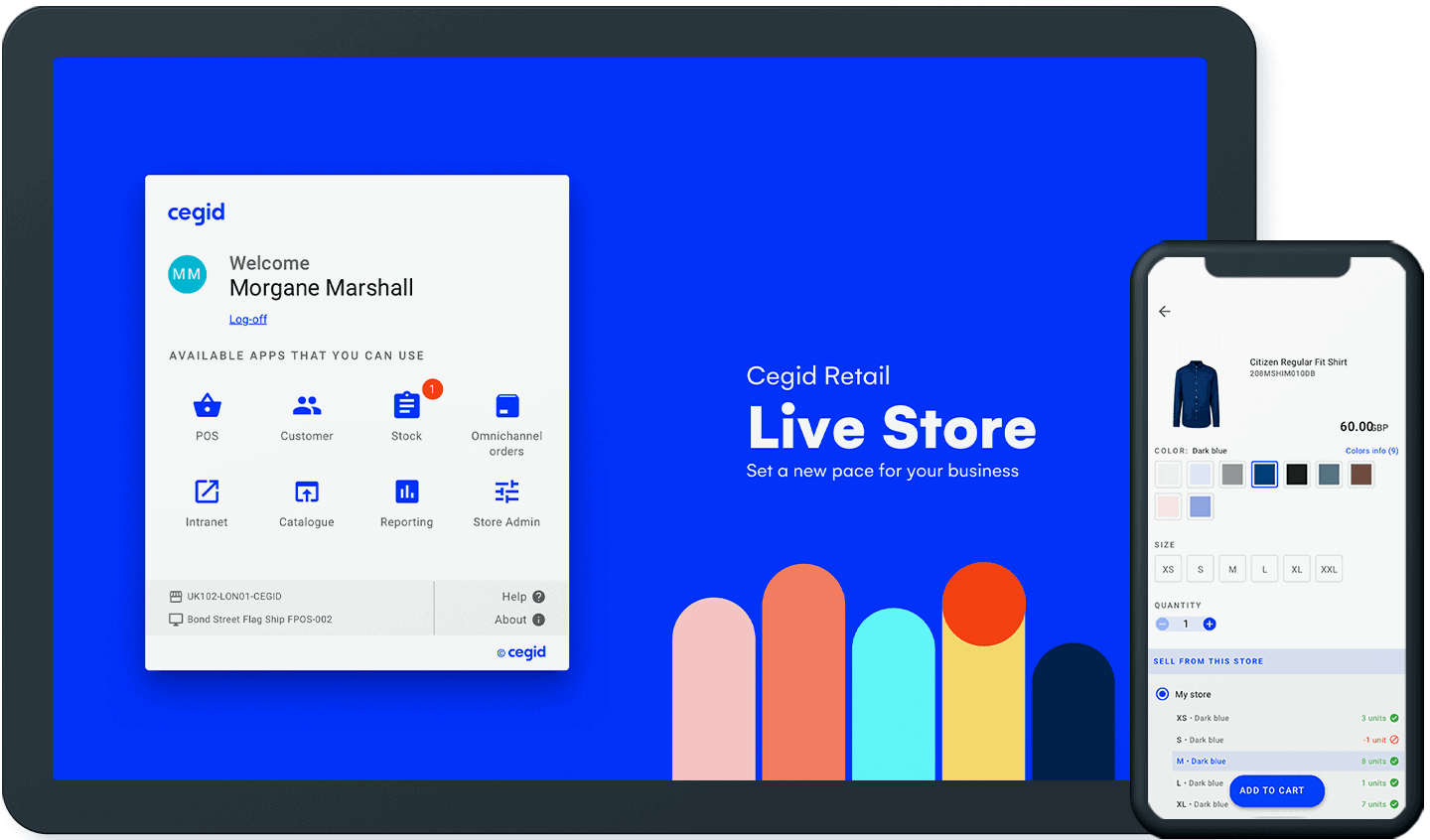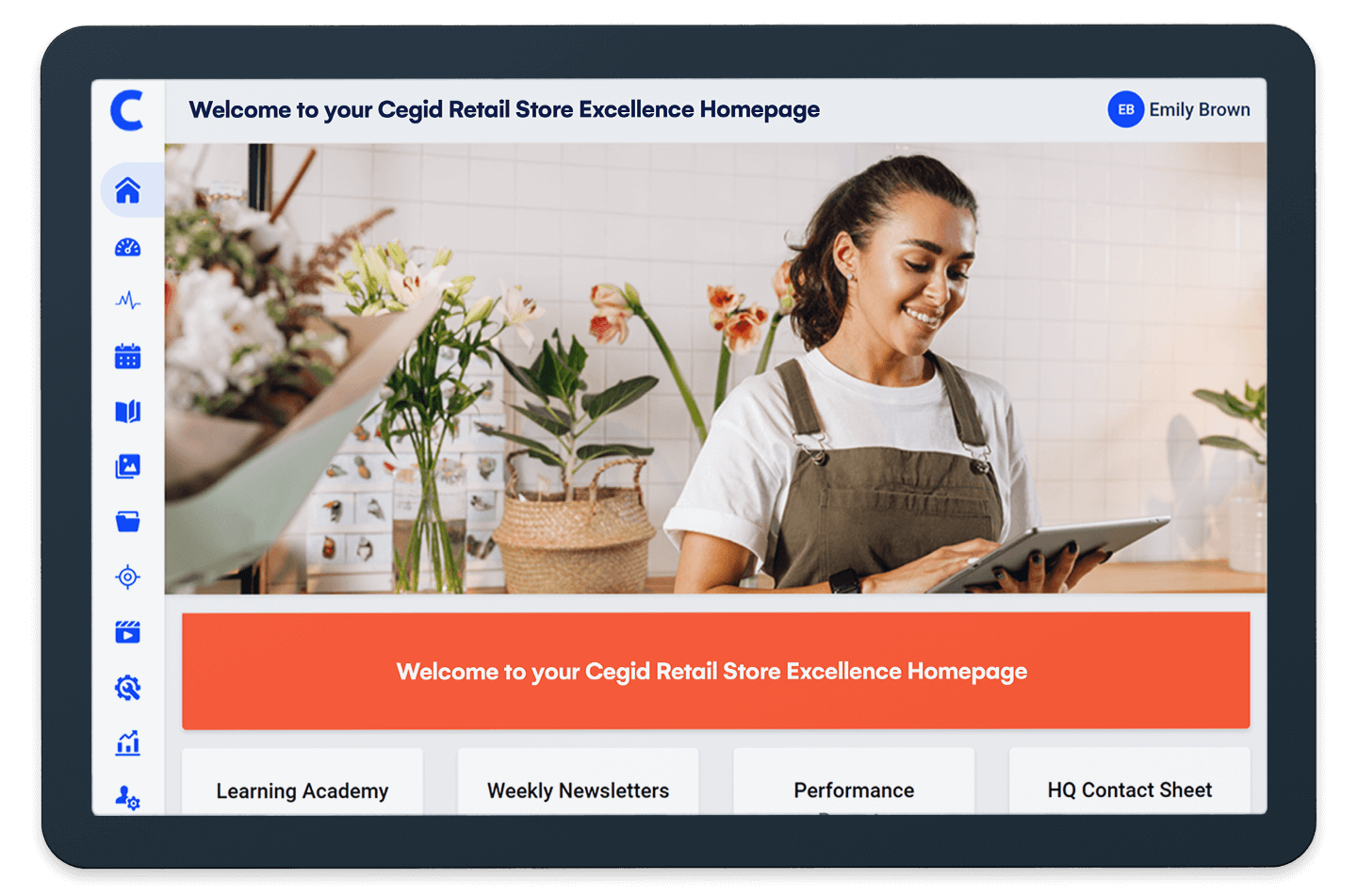Recommended products for you
Cegid Retail
Cegid Retail Store Excellence

Cegid Retail
Elevate your Retail Experience
OMNICHANNEL BTOC PLATFORM
The cloud-native POS and unified commerce platform for specialty retailers to manage their business and deliver exceptional shopping experiences worldwide.
- Maximize your sales potential across all channels
- Gain a single, real-time view of inventory across the enterprise
- Manage your activities efficiently and track KPIs
- Benefit from a secure, global SaaS platform

Cegid Retail Store Excellence
The leading task management platform for Retail Operations
Whether you want to improve product presentation, supercharge your sales training or align your labor forecasting with your task management workflow, discover how Cegid Retail Store Excellence can help you do retail better.
- Stores will never miss a task again
- Clear and targeted operational comms
- Visual Merchandising Excellence
- Checks and audits you can count on
- Give your teams the tools they need to thrive
- Co-ordinate retail activities across your business
More food for thought?
Browse our resource library for industry insights. Access expert guides, customer testimonials, blog articles, videos and more!
access resourcesCegid Cloud: inspired by your business, ready for you
Ensure the continuity of your operations and develop a more reactive organisation using infrastructure and Cloud management solutions that are always available, easily accessible, and can quickly be extended to meet your needs.
Switch to Cegid Cloud


